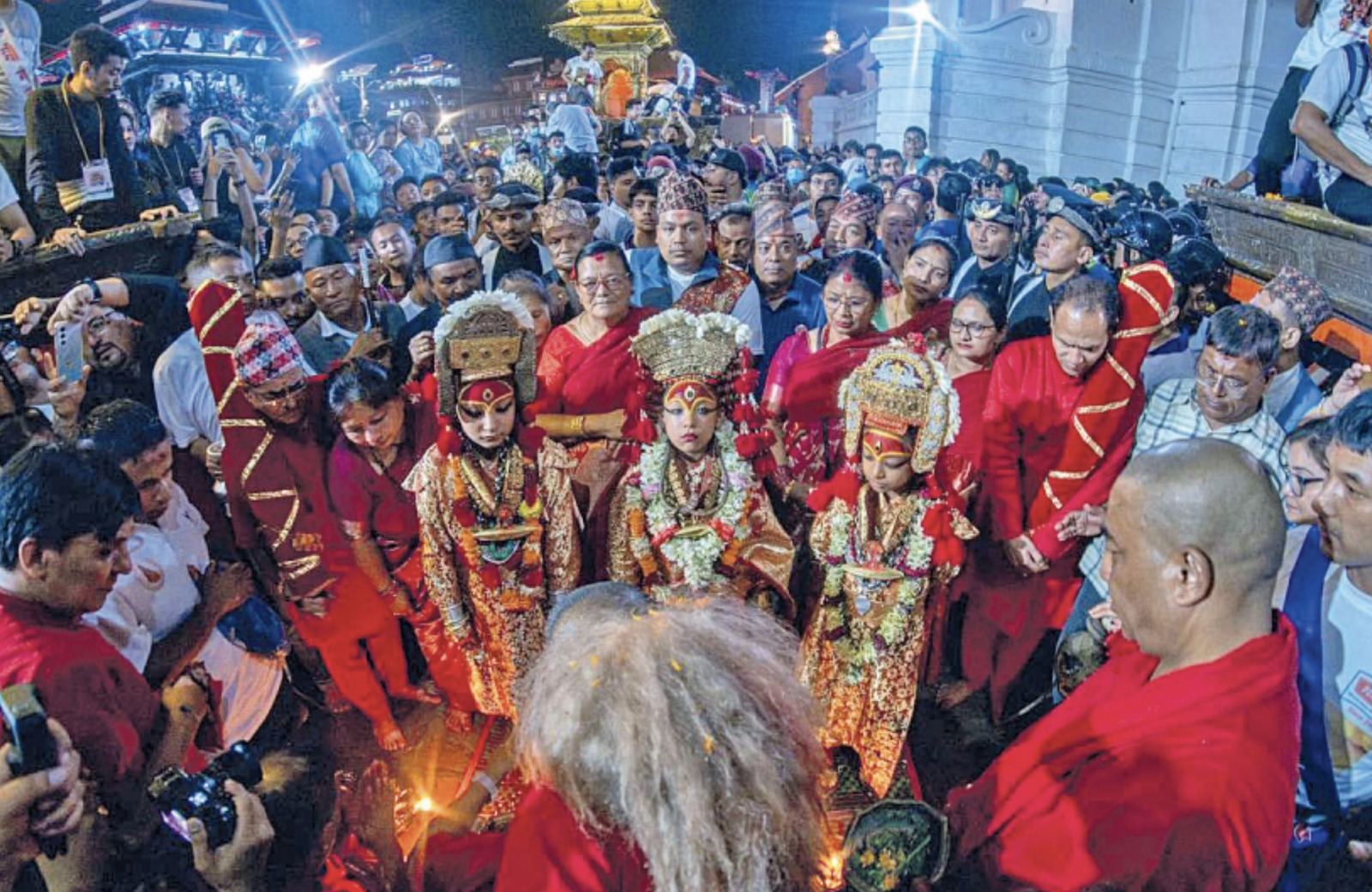Culture & Lifestyle
Nepal’s political turmoil puts heritage at risk
The destruction of monuments and postponement of festivals highlight the growing threat to our heritage.
Sanskriti Pokharel
The wheels of Rato Machhindranath’s chariot, stored safely in Jawalakhel after this year’s festival, were reduced to ashes during the recent protests. Locals had spent weeks in the jungle searching for Sa:nan, the rare wood used to build it. Artisans then devoted months to shaping the wheel, only to see their effort vanish in an instant.
In the wake of these events, the final chariot procession of Indra Jatra, scheduled for Thursday, has been postponed. According to the Indrajatra Management Committee, the Guthi Corporation, and the Nepal Army, the festival will not be celebrated traditionally this year. The decision follows a meeting held on Wednesday noon, citing the country’s current tense situation, insecurity, and curfew. The committee has decided that, if held, the celebrations will be shortened and organised in a limited manner due to the circumstances.
Content creator Aasutosh Barahi, who documents culture preservation, expressed his grief online. “Yes, the chariot wheels can be rebuilt,” he wrote on Instagram. “But watching such destruction unfold is truly heartbreaking.”
The damage spread far beyond the chariot. The sight of Singha Durbar on fire shocked the national conscience. Built in 1908 by Rana Prime Minister Chandra Shumsher, the palace once stood as one of Asia’s largest and most luxurious. Its design blended neoclassical, Palladian, and Baroque styles, reflecting a grand vision of early 20th-century power.
History and culture writer Sambid Bilas Pant stresses its significance. “While it houses our government, we must remember it is first a historical palace,” he says.
Singha Durbar is more than an administrative hub. For decades, it has embodied Nepal’s political journey, from Rana autocracy to monarchy and later to democracy and republic. With more than 1,700 rooms and seven courtyards, its scale represents both excess and authority. A devastating fire in 1973 destroyed much of the complex. Though parts were rebuilt, the palace never regained its original splendour.

With flames again consuming the structure, many see the loss as another wound to Nepal’s collective memory.
Moreover, Sheetal Niwas, the official residence of Nepal’s president, also suffered damage. The building is a rare Rana-era masterpiece that fuses Malla-style architecture with European Palladian influences. Its destruction further deepened the sense of cultural loss.
Pant warns that Nepal’s most vulnerable treasures now face heightened risk. “The reported fire near Bhaktapur Durbar Square underscores the danger to our three Durbar Squares,” he says. “These Malla-era complexes are made largely of wood, centuries old, and extremely fragile. If they burn, they cannot be truly replaced. Their destruction would also deepen political and social divides.”
He calls on the Nepal Army to secure heritage zones immediately, describing their protection as a national urgency.
However, in Patan, some relief is felt. Resident Aayushma Tamrakar says the heritage monuments there have not suffered major damage.
Prakash Darnal, general secretary of the Nepal Heritage Society, says his organisation is struggling to verify the situation on the ground. “Because of the curfew, we have not been able to visit the sites ourselves,” he explains. “Our information is coming through social media and news reports.” Based on their findings, temples in the main heritage zones remain undamaged.
Even amid relief, Darnal raises concerns about long-term preservation. He stresses that heritage belongs not only to the present but also to future generations. “Rather than rushing into renovation after damage, we should properly plan first,” he said. “Planning should be careful and deliberate.”
As the smoke clears, Nepal faces urgent questions. How can a nation safeguard monuments embodying its history while grappling with political upheaval? The protests were meant to demand accountability and progress. Yet the cost now includes irreplaceable structures, painstakingly built by earlier generations and cherished as symbols of continuity.




 11.12°C Kathmandu
11.12°C Kathmandu
.jpg&w=200&height=120)














